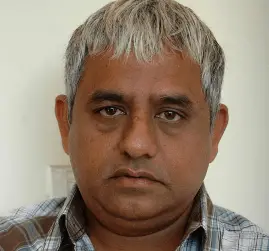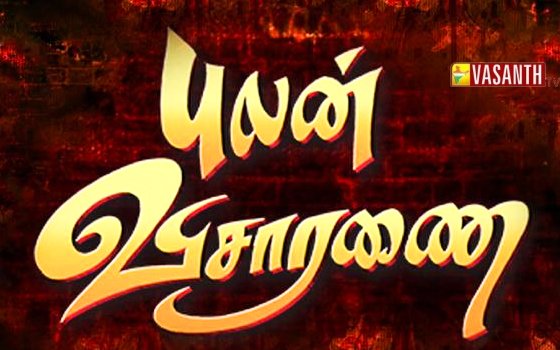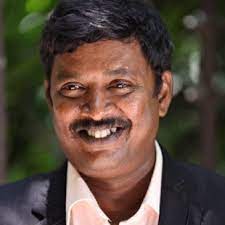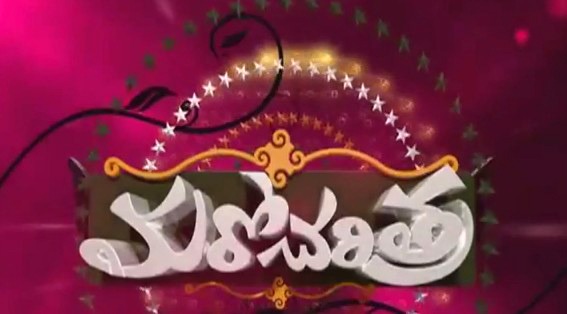
Ravi Yadav, an Indian cinematographer is known for his works in Tamil and Hindi movies. He completed his diploma in photography from MGR Film Institute, Chennai. After obtaining the degree, he started working in Advertisement films which he continued for a short period. Later, he moved towards film industry and tried to find a new avenue for his talent.
In the initial stage of his career, he got help from his batchmate and friend R. K. Selvamani and worked for a couple of Tamil films. He later on collaborated with Selvamani, and produced two films. Ravi Yadav made his debut as a cinematographer in 1988 with 'Puthiay Vanam' which was Sivaji Ganesan's 275th film. The film is written directed by R. V. Udayakumar, and Ravi Yadav worked as director of photography.
His next project as a cinematographer was in association with director R.K. Selvamani, and the film was titled '
Pulan Visaranai
'Pulan Visaranai' is a Tamil language TV s >> Read More...
 ' which was a blockbuster. In his third project 'Kuttrapathirikai,' Ravi Yadav turned into a producer, and the director of the film was R.K. Selvamani. In this year, he also set up a film production company called Yadavalaya Films.
' which was a blockbuster. In his third project 'Kuttrapathirikai,' Ravi Yadav turned into a producer, and the director of the film was R.K. Selvamani. In this year, he also set up a film production company called Yadavalaya Films.
The film is made in the backdrop of LTTE and former Prime Minister Rajiv Gandhi’s death. Hence, it was struck with censor board for 11 years and was made in 1991, but it finally released in 2007. Due to his earlier project that got struck with censor board for release, R. K. Selvamani made a film 'Chembaruthi' (1992). In this film, actress Roja made her debut.
The film had cinematography by Ravi Yadav. Later on, he even worked as the cinematographer in a couple of Tamil movies that included directors like Agathiyan,
Cheyyar Ravi
Cheyyar Ravi, born in 1962 in Vadamanapakkam Villa >> Read More...
 , and Sridhar Prasad. He also worked as a cinematographer for a Malayalam movie titled 'Devaraagam' which was directed by Bharathan. In the year 2001, he shifted to Bollywood for a greener pasture.
, and Sridhar Prasad. He also worked as a cinematographer for a Malayalam movie titled 'Devaraagam' which was directed by Bharathan. In the year 2001, he shifted to Bollywood for a greener pasture.
He also did cinematographic work for a solo Telugu movie 'Show' (2002) which was directed by Neelakant, The film was awarded the National Film Award for the Best Feature film in Telugu, and the director also won the National Film Award for best screenplay. Also, he produced a Telugu movie '
Maro Charitra
Maro charitra is a melodrama that revolves around >> Read More...
 ' (2010) which was an adaptation of K. Balachander's 1978 movie of the same name starring Kamal Haasan and Saritha.
' (2010) which was an adaptation of K. Balachander's 1978 movie of the same name starring Kamal Haasan and Saritha.
For the 2012 version, the veteran director Balachander retained the idea of the story, but the film flopped. He cinematographed in popular Hindi films namely Humraz, Tarzan, Aitraaz, 36 China Town, Naqaab, Race 1, Players, Race 2.
He made his debut as a Hindi cinematographer with the debut movie of Raima Sen which starred Fardeen Khan in the lead role. The film was 'Hum Ho Gaye Aapke' (2002) which was directed by Agathiyan. His association in Bollywood was mostly with director Abbas-Mustan with whom Ravi Yadav had collaborated on eight–nine projects.
Also, he was the cinematographer for Imtiaz Ali, Antara Bhardwaj, Swamy M. Kandan, Rajkumar Santoshi, Sajid Khan, Sunny Deol, Rajiv Menon. In his initial days, his biggest break in Bollywood was through the movie 'Humraz ' which was directed by Abbas-Mustan. The film scored at the box office well and even won the appreciation of critics.
’Humraz’ seems to be a tribute to technology, and the camera work was outstanding due to its screenplay and a good plot. One must appreciate the ace cinematographer for his crafted exceptional camera work for action thrillers like Race, Race-2. In both the films, there was a high octane action, but it had a stylized look and feel throughout it.
According to the cinematographer, there was a difference in two versions (Race and Race-2). Both the films were glamorous, but Race had a dark feel while Race-2 had soft lighting methods. The cinematographer shares a great rapport with Abbas Mustan, and all films of Abbas Mustan need a multi-camera setup and a long outdoor shoot always. Every shot in 'Race 2' is shot with a multi-camera setup with four cameras.
The cinematographer prefers shooting with Sony F65, Red Epic-z, etc. His works prefer to be 80-to 90 percent manual. He uses only the rest 10 percent as digital work.
LATEST NEWS
WEB STORIES
LATEST SERIALS & SHOWS
LATEST WEB SERIES
LATEST PHOTOS
ACTRESS PHOTOS
LATEST ARTICLES
OTHER CINEMATOGRAPHERS
BORN TODAY